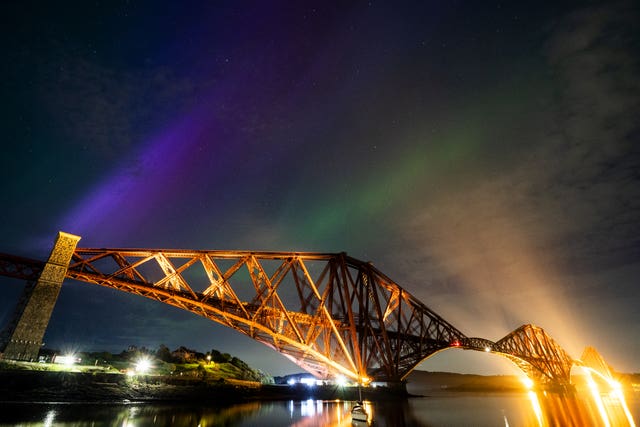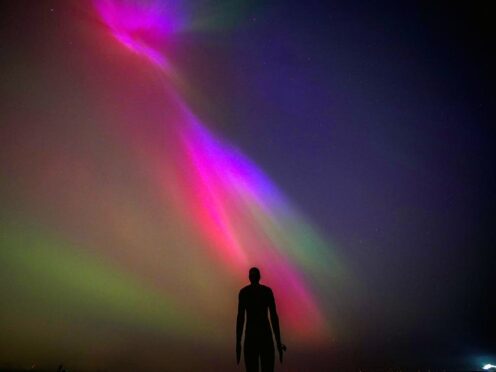The Northern Lights could be visible again in the UK over the coming weeks, space weather forecasters have said.
Also known as aurora borealis, the bands of pink and green light were seen across the UK and in parts of Europe last week after an extreme geomagnetic storm caused them to be more visible, according to the US National Oceanic and Atmospheric Administration.
The latest sun storm activity follows a period of flares and mass ejections of coronal plasma that threatened to disrupt power and communications on Earth and in orbit.

Met Office space weather expert Krista Hammond said the sunspot region will be rotated back towards Earth in 10 to 12 days’ time, paving the way for further geomagnetic storms and displays of the Northern Lights.
“The sunspot region will be be coming back round onto the Earth facing side of the sun,” she said.
Aurora displays occur when charged particles collide with gases in the Earth’s atmosphere around the magnetic poles.
The sun is currently in the most active period of its 11-year cycle.
Said Ms Hammond: “We’re currently at solar maximum and we’re seeing more sunspots.
“If we see more sunspots, we see this increased frequency in space weather and therefore the aurora.”
The forecaster downplayed the chances of a full repeat of last weekend’s display, but said more solar activity would mean a good chance of sightings “in the coming weeks, months and years”.
“It was such a unique set of circumstances that happened last weekend.
“The chances of the same sunspots doing the same thing again – It’s probably quite slim.
“I wouldn’t be surprised if it comes around and there’s some activity on it, but it won’t be I doubt, a repeat performance.”
Where displays can be seen in the UK is dictated by the “strength of geomagnetic storming”, she said.
There may even be some smaller mass ejections on their way to Earth in the coming days with the potential to create more beautiful displays, Ms Hammond said.
“There are a couple of mass ejections on their way to Earth.
“They’re a lot less powerful than what we saw last weekend, but they could bring aurora displays across predominantly northern parts of the UK, such as Scotland, Northern Ireland, north of England.
“Just because we’re not seeing aurora across the whole of the UK, it doesn’t mean that we’re not going to see it in some areas,” she said.
For a large display to be visible, activity must happen during the night time, and when there are clear skies, she added.
